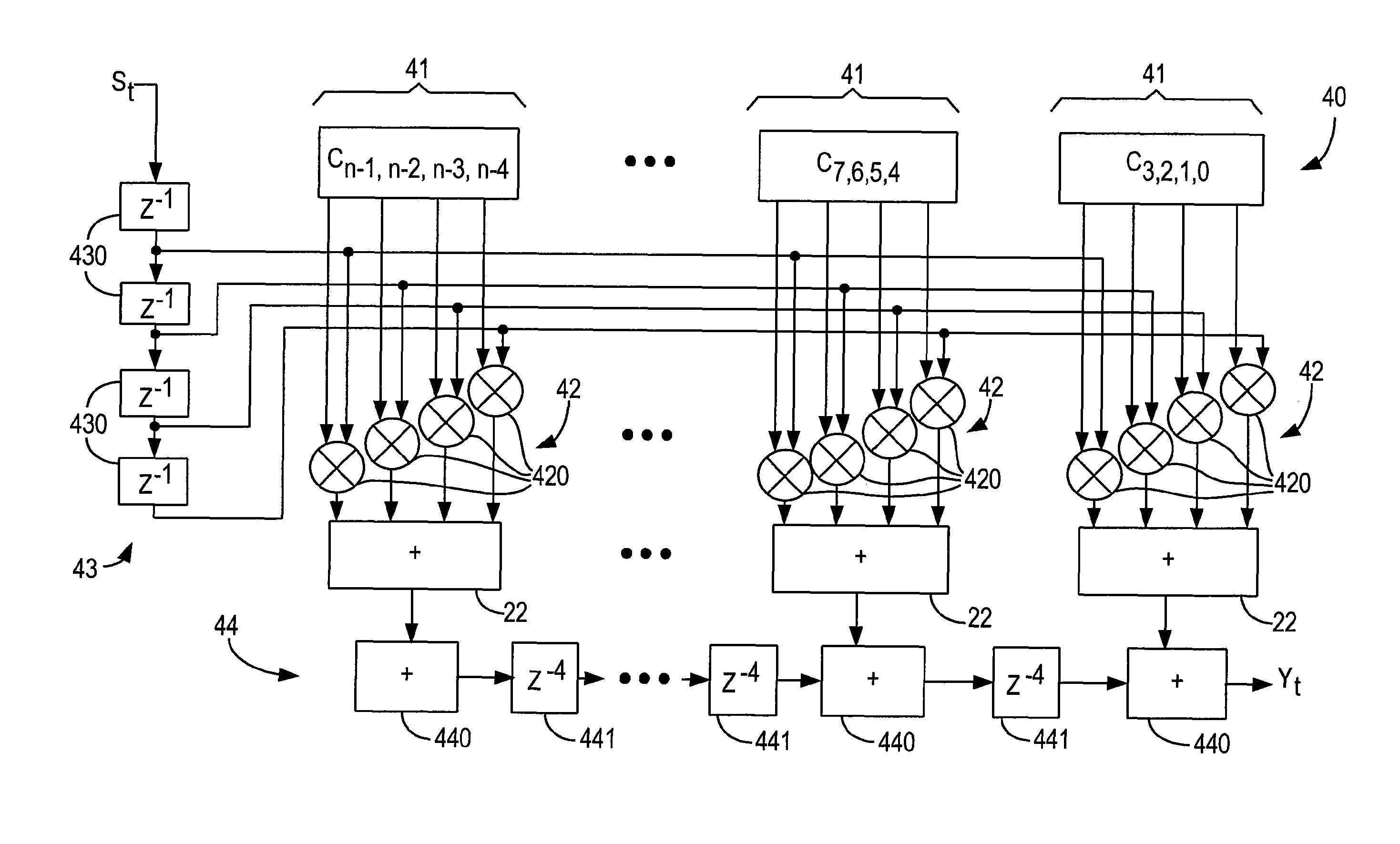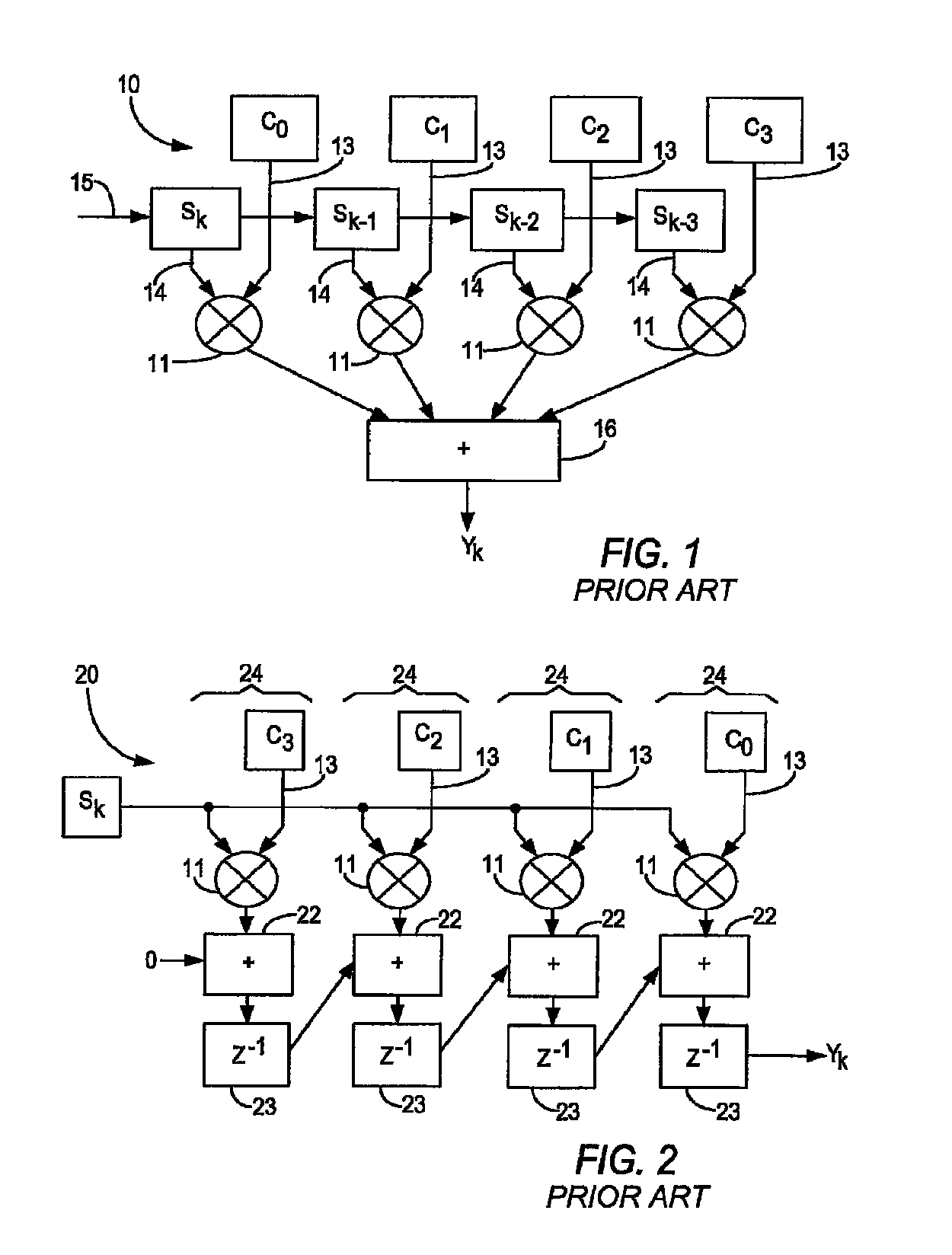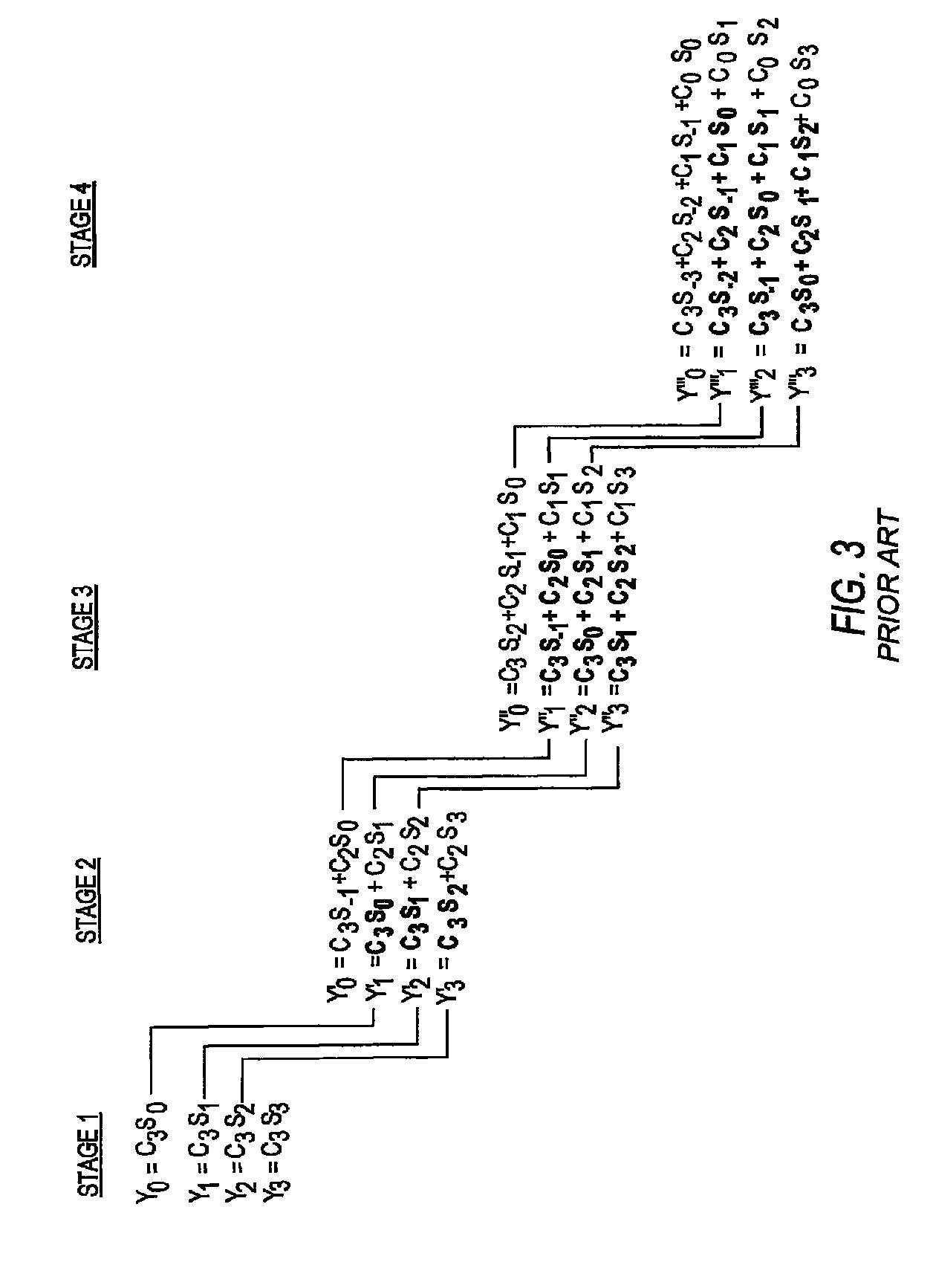Method for configuring a finite impulse response filter in a programmable logic device
a programmable logic and filtering technology, applied in the field of configuring a finite impulse response filter in a programmable logic device, can solve the problems of difficult routing, and limiting the maximum clock speed attainable, and achieve the effect of greater efficiency
- Summary
- Abstract
- Description
- Claims
- Application Information
AI Technical Summary
Benefits of technology
Problems solved by technology
Method used
Image
Examples
Embodiment Construction
[0022]As described above, FIR filters are common structures used in many DSP applications. Mathematically, a FIR filter may be described as:
[0023]Yk=∑i=0Taps-1Ci•Sk-i
where Yk is the kth output term, ci is the ith coefficient, sk-i is the (k−i)th sample, and Taps is the number of taps in the filter.
[0024]The structure of a 4-tap Direct Form II FIR filter 10 is shown in FIG. 1, and includes four multipliers 11. The multiplier outputs are added by adder tree 12, shown schematically in collapsed form, to provide term Yk. Each multiplier 11 has a coefficient input 13 for one of the four coefficients c0-c3. In some applications, the coefficients are held constant, while in others, such as adaptive filters, decimation filters, interpolation filters, etc., they may change. Each multiplier 11 also has a sample input 14, and the samples sk are clocked in via sample chain 15. The kth term Yk is provided when coefficient c0 is being multiplied by the kth sample sk and the other coefficien...
PUM
 Login to View More
Login to View More Abstract
Description
Claims
Application Information
 Login to View More
Login to View More - R&D
- Intellectual Property
- Life Sciences
- Materials
- Tech Scout
- Unparalleled Data Quality
- Higher Quality Content
- 60% Fewer Hallucinations
Browse by: Latest US Patents, China's latest patents, Technical Efficacy Thesaurus, Application Domain, Technology Topic, Popular Technical Reports.
© 2025 PatSnap. All rights reserved.Legal|Privacy policy|Modern Slavery Act Transparency Statement|Sitemap|About US| Contact US: help@patsnap.com



